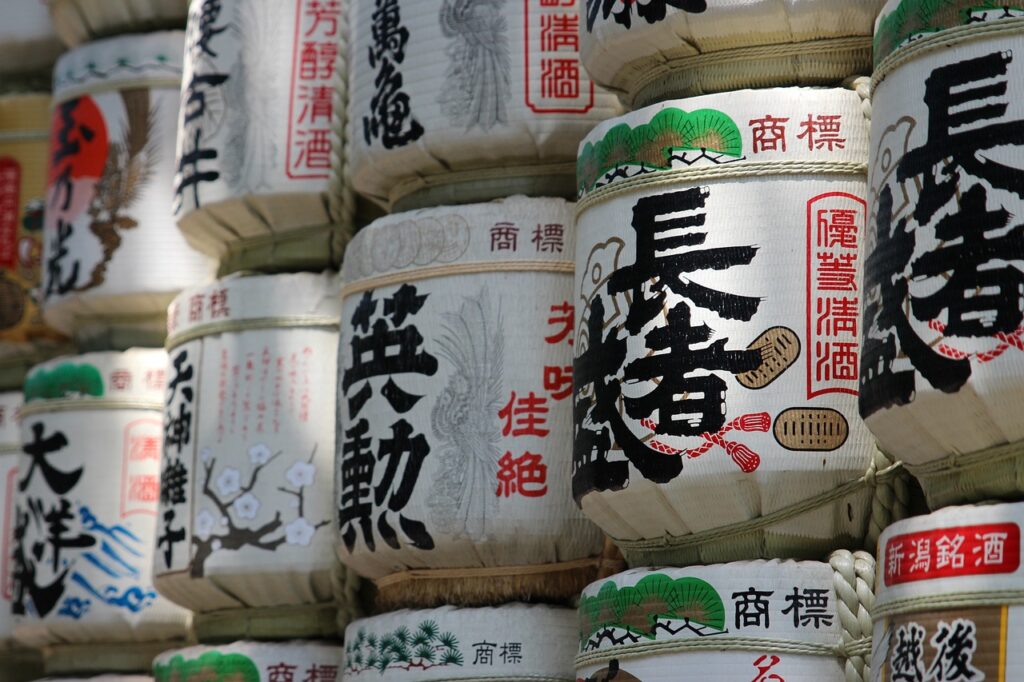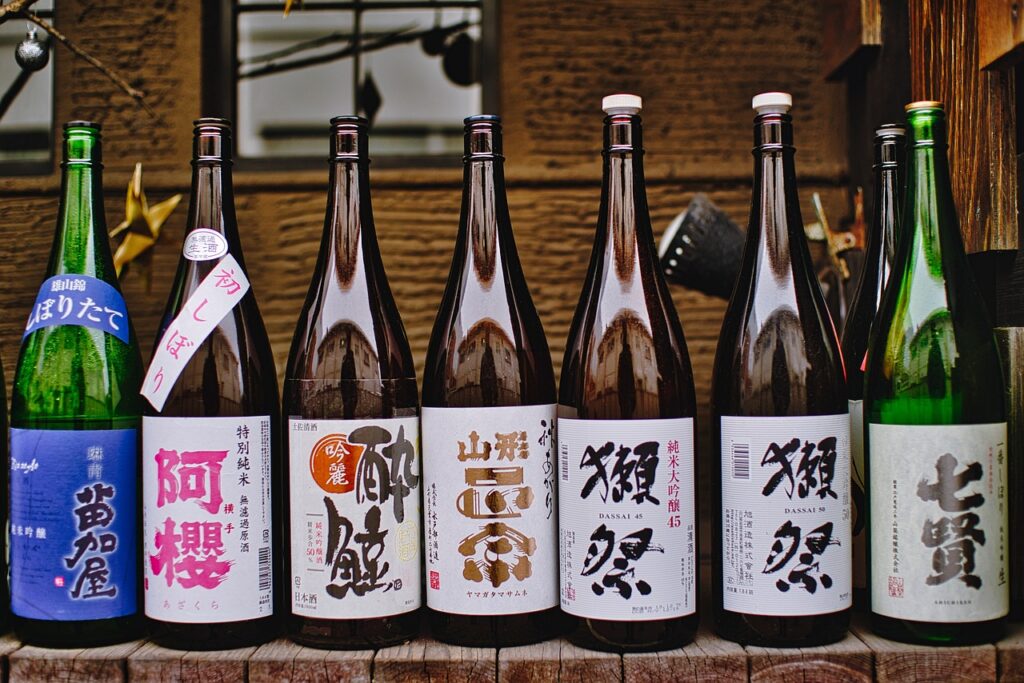Sake, with its rich and complex flavor, is a traditional Japanese alcoholic beverage that has fascinated many people. This time, we will delve into the full picture of sake, from the basics of sake, its production process, sales form, type, pairing with dishes, to the explanation of specific brands.
目次
1. The Basics of Sake
The main ingredients of sake are water, rice, koji mold, and yeast. The quality of the water used in sake brewing greatly affects the quality of sake, and the rice used is mainly sake-brewing rice grown specifically for this purpose.
2. Sake Production Process

Sake production goes through a sophisticated process. First, the rice is washed, steamed, and part of it is turned into koji rice with koji mold. Koji rice, regular rice, water, and yeast are mixed to undergo primary fermentation, and then more koji rice, rice, and water are added for secondary fermentation. After the fermentation is complete, it is pressed to obtain unfiltered raw sake. The raw sake is then pasteurized and aged.
3. Types of Sake
There are various types of sake, each differing depending on the degree of rice polishing and the presence or absence of additives. For example, there are junmai-shu, junmai-ginjo-shu, junmai-daiginjo-shu, ginjo-shu, daiginjo-shu, and honjozo-shu, each with its own characteristics and personality.
4. Sake Sales Form
Sake is sold in various containers such as glass bottles, one-liter bottles, paper packs, plastic bottles, sake barrels, and cans. Each container affects the flavor, storage condition, and convenience of the sake due to its material, shape, and size.
5. Pairing Sake with Food
Sake, with its wide range of flavors, can be paired with a variety of dishes, including Japanese food, seafood, cheese, meat dishes, Chinese food, and ethnic cuisine.
6. Explanation of the Brand: “Dassai”
“Dassai” is one of the most popular sake nationwide, and especially “Dassai Junmai Daiginjo 23BY” is considered the top-class product among them. Dassai is produced by Asahi Shuzo in Yamaguchi Prefecture, and its characteristic is that it polishes the rice to a lower degree than regular junmai daiginjo sake (down to 23%), resulting in a clear, refreshing, complex aroma and a mellow yet deep flavor.
7. Conclusion

Sake, with its depth and breadth, and deep connection with Japanese culture, is always a drink with new discoveries. By understanding its manufacturing methods, types, pairings, and characteristics of each brand, you can enjoy sake more deeply. Visiting a local sake brewery to observe the brewing process, or tasting sake, will further broaden its appeal. Why not step into the world of sake and find your own favorite drink?














最近のコメント